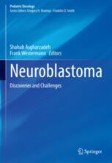Search
Search Results
-
Naïve pluripotent-like characteristics of non-tumorigenic Muse cells isolated from human amniotic membrane
Multilineage-differentiating stress-enduring (Muse) cells are non-tumorigenic pluripotent-like stem cells that exhibit triploblastic differentiation...

-
Extracellular vesicles released by non-small cell lung cancer cells drive invasion and permeability in non-tumorigenic lung epithelial cells
Extracellular vesicles (EVs) released from non-small cell lung cancer (NSCLC) cells are known to promote cancer progression. However, it remains...

-
Establishment of primary prostate epithelial and tumorigenic cell lines using a non-viral immortalization approach
BackgroundResearch on prostate cancer is mostly performed using cell lines derived from metastatic disease, not reflecting stages of tumor initiation...

-
Cell-in-cell phenomenon: leukocyte engulfment by non-tumorigenic cells and cancer cell lines
BackgroundResearch on cell-in-cell (CIC) phenomena, including entosis, emperipolesis and cannibalism, and their biological implications has increased...

-
Neuroblastoma Tumor Microenvironment: Non-Immune Cells and Exosomes
Schwann cells (SC), endothelial cells (EC), pericytes, and cancer-associated fibroblasts (CAF) are non-immune cells present in the tumor...
-
Selective elimination of tumorigenic cells from mixed culture of normal and tumorigenic cells using hybrid liposomes aimed at realizing of cell therapy
While induced pluripotent stem (iPS) cells are expected to be a cell source for regenerative medicine, they also have tumorigenic properties owing to...

-
A functional role of S100A4/non-muscle myosin IIA axis for pro-tumorigenic vascular functions in glioblastoma
BackgroundGlioblastoma (GBM) is the most aggressive form of brain tumor and has vascular-rich features. The S100A4/non-muscle myosin IIA (NMIIA) axis...

-
Nuclear rupture induced by capillary constriction forces promotes differential effects on metastatic and normal breast cells
During metastatic dissemination, circulating tumour cells (CTCs) enter capillary beds, where they experience mechanical constriction forces. The...

-
Overview: Cancer Stem Cells
Cancer has become a global issue and retains a central place in fatality rates among the wide variety of diseases known the world over, and the...
-
Lack of apoptosis leads to cellular senescence and tumorigenesis in Drosophila epithelial cells
Programmed cell death (apoptosis) is a homeostasis program of animal tissues designed to remove cells that are unwanted or are damaged by...

-
Crithmum maritimum Extract Restores Lipid Homeostasis and Metabolic Profile of Liver Cancer Cells to a Normal Phenotype
Hepatocellular carcinoma (HCC) is an alarming epidemiological clinical problem worldwide. Pharmacological approaches currently available do not...

-
ES Cells or iPS Cells, that Is the Question
There is increasing evidence that microRNA (miRNA) genes regulate cell self-renewal and pluripotency in stem cells. miR-302, miR-209, and miR-371...
-
Comparison of mammosphere formation from stem-like cells of normal breast, malignant primary breast tumors, and MCF-7 cell line
BackgroundMammosphere formation assay has become a versatile tool to quantify the activity of putative breast cancer stem cells in non-adherent in...

-
S100A8/A9 mediate the reprograming of normal mammary epithelial cells induced by dynamic cell–cell interactions with adjacent breast cancer cells
To understand the potential effects of cancer cells on surrounding normal mammary epithelial cells, we performed direct co-culture of non-tumorigenic...

-
Hyperthermia for Targeting Cancer and Cancer Stem Cells: Insights from Novel Cellular and Clinical Approaches
The Cellular Heat Shock Response and in particular heat shock protein activation are vital stress reactions observed in both healthy and cancer...

-
Cancer Stem Cells
Cancer stem cells (CSCs) share traits with healthy stem or precursor cells, which include having the capacity to self-renew and differentiate into...
-
The Hallmarks of Circulating Hybrid Cells
While tumor metastases represent the primary driver of cancer-related mortality, our understanding of the mechanisms that underlie metastatic...
-
Cancer Stem Cells: Current Challenges and Future Perspectives
Despite major advances in health care including improved diagnostic tools, robust chemotherapeutic regimens, advent of precision, adjuvant and...
-
Chronic Leptin Treatment Induces Epithelial-Mesenchymal Transition in MCF10A Mammary Epithelial Cells
Leptin is a cytokine-like hormone that functions as a link between obesity and breast cancer (BC). Leptin treatment induces Epithelial to Mesenchymal...

-
Mesenchymal Stem Cells, Cancer Stem Cells (CSCs), and Circulating Tumor Cells (CTCs): Roles and Combinations in Tumor Growth and Dissemination
Mesenchymal stem cells are considered the key cells in tissue regeneration after damage. MSCs play a fundamental role in cancer since they can be...
